Introduction
The First Synod of Angamaly was held in 1582 and was presided over by the Metropolitan, Mar Abraham. This synod looked at the liturgical books of the Syrians and the establishment of a seminary in Vypeecotta, as well as other matters. Angamaly was the first archdiocese in India at this time. It was later merged with the Goa Archdiocese. [2]
When Dom Francis Ros returned to Angamaly on 1 May 1601, he was welcomed by the Archdeacon Givargis of the Cross (George of the Cross) and the Christians of St. Thomas. Soon after, the new bishop realised that there was resistance on the part of the Christians of St. Thomas, regarding the suppression of their ancient Metropolitan title. At the same time, a number of decrees of the Synod of Diamper (or Udayamperoor) in 1599; these were seen as an imposition on the Christians, designed by Archbishop Aleixo de Menezes in a context of tension and the resistance of the native priests.
In this context, Ros wanted to convoke a new Synod to substitute the Synod of Diamper, respecting the law of the Latin Church of the time. [3] The synod resolved three issues which had followed the Synod of Diamper. [4]
After the second synod, Angamaly became a separate Archdiocese again. [5]

The Syro-Malabar Church, also known as the Syro-Malabar Catholic Church, is an Eastern Catholic church based in Kerala, India. It is a sui iuris (autonomous) particular church in full communion with the Holy See and the worldwide Catholic Church, with self-governance under the Code of Canons of the Eastern Churches (CCEO). The major archbishop presides over the entire church. The incumbent Major Archbishop is Raphael Thattil, serving since January 2024. It is the largest Syriac Christian church and the largest Eastern Catholic church. Syro-Malabar is a prefix reflecting the church's use of the East Syriac liturgy and origins in Malabar. The name has been in usage in official Vatican documents since the nineteenth century.
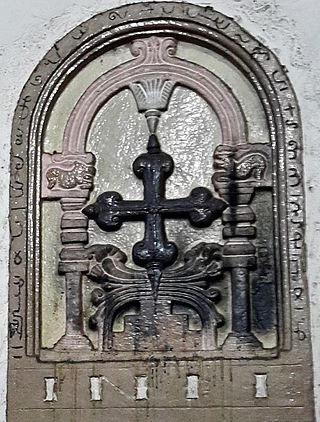
The Synod of Diamper (Udayamperoor Synod) (Malayalam: ഉദയംപേരൂർ സൂനഹദോസ്, romanized: Udayampērūṟ Sūnahadōs), held at Udayamperoor (known as Diamper in non-vernacular sources) in June 1599, was a diocesan synod, or council, that created rules and regulations for the ancient Saint Thomas Christians (also known as Mar Thoma Nasranis) of the Malabar Coast, a part of modern-day Kerala state, India, formally subjugating them and downgrading their whole Metropolitanate of India as the Diocese of Angamale, a suffragan see to the Archdiocese of Goa administered by Latin Church Padroado missionaries. This synod also introduced forced Liturgical Latinisation and the eschewal of local practices and beliefs, leading to a significant ecclesial protest by Saint Thomas Christians known as Coonan Cross Oath and a subsequent schism in the mid-17th century.

Archbishop Aleixo de Menezes or Alexeu de Jesu de Meneses was a Catholic prelate that served as Archbishop of Goa, Archbishop of Braga and Viceroy of Portugal during the Philippine Dynasty.
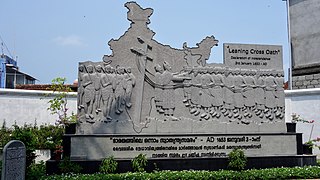
The Coonan Cross Oath, also known as the Great Oath of Bent Cross or Leaning Cross Oath, was taken on 3 January 1653, in Mattancherry, by a significant portion of the Saint Thomas Christian community in the Malabar region of India. This public declaration marked their refusal to submit to the authority of the Jesuits and the Latin Catholic hierarchy, as well as their rejection of Portuguese dominance in both ecclesiastical and secular matters.
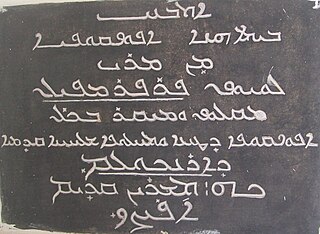
The Archeparchy of Ernakulam–Angamaly is the major archeparchy and the see of the Major Archbishop of the Syro-Malabar Catholic Church. It has been the major archeparchy since 1992 when the Syro-Malabar Catholic Church was elevated to the status of a major archiepiscopal church with Ernakulam-Angamaly as the primatal see. The major archbishop of Ernakulam-Angamaly is the main bishop of the jurisdiction, at the same time the head of the Syro-Malabar Catholic Church. The eparchies of Kothamangalam and Idukki are the two suffragan eparchies of the major archeparchy.

This is a timeline of the history of the Syro-Malabar Catholic Church in India.

Parambil Chandy was an Indian Catholic prelate who served as Archbishop of Cranganore from 1663 to 1687. He was the first known native Indian bishop.

Metropolitanate of India was an East Syriac ecclesiastical province of the Church of the East, at least nominally, from the seventh to the sixteenth century. The Malabar region (Kerala) of India had long been home to a thriving Eastern Christian community, known as the Saint Thomas Christians. The community traces its origins to the evangelical activity of Thomas the Apostle in the 1st century. The Christian communities in India used the East Syriac Rite, the traditional liturgical rite of the Church of the East. They also adopted some aspects of Dyophysitism of Theodore of Mopsuestia, often inaccurately referred as Nestorianism, in accordance with theology of the Church of the East. It is unclear when the relation between Saint Thomas Christian and the Church of the East was established. Initially, they belonged to the metropolitan province of Fars, but were detached from that province in the 7th century, and again in the 8th, and given their own metropolitan bishop.

The Saint Thomas Christian denominations are Christian denominations from Kerala, India, which traditionally trace their ultimate origins to the evangelistic activity of Thomas the Apostle in the 1st century. They are also known as "Nasranis" as well. The Syriac term "Nasrani" is still used by St. Thomas Christians in Kerala. It is part of the Eastern Christianity institution.
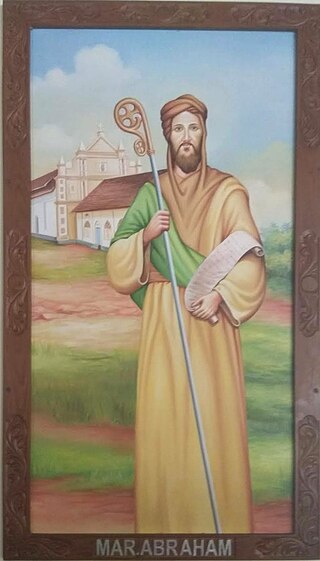
Mar Abraham, also known as Abraham of Angamaly or Abraham of Gazira, was the last East Syrian bishop of the See of Angamaly, who entered into communion with Rome in 1565 and who was the last link in Angamaly from the long line of the bishops from the East Syriac bishops sent from the Church of the East to the Saint Thomas Christians. He first came to India in 1556 from the traditionalist patriarchate. Deposed from his position in 1558, he was taken to Lisbon by the Portuguese, escaped at Mozambique and left for his mother church in Mesopotamia, entered into communion with the Chaldean patriarchate and Rome in 1565, received his episcopal ordination from the Latin patriarch of Venice as arranged by Pope Pius IV (1559–65) in Rome. Subsequently, Abraham was appointed by Pope as Archbishop of Angamaly.

Gīwargīs of the Cross, also spelled Geevarghese of Cross and George of Cross, was an archdeacon (arkkadyakon) and leader of the Saint Thomas Christian community of India. He was the son of the elder brother of Giwargis of Christ. By the last year of Bishop Mar Abraham, he became the Archdeacon. After the Bishop's death in 1597, he led the Indian Church. He led the church amidst Portuguese intervention. The Synod of Diamper (1599) was held during his time. In 1601, Francis Ros became Bishop, appointed by the Archbishop of Goa, Aleixo de Menezes. In the beginning there was cordiality, but the deliberate downgrading of Angamaly and the inertia of Bishop Ros frustrated him. When the Archdeacon protested, Ros excommunicated him. In 1615, the Bishop and Archdeacon reconciled each other, but again fell out later. The next Bishop, Etienne de Brito, also did not recognize the Archdeacon's ecclesiastical status. He led the church in a period of severe stress and turmoil, and held it together. After his time and his brother's time the root family of Pakalomattam became heirless. The only son shifted residence to Alappatt house. He is believed to have been buried in the forefront of Pakalomattam Thravadu (Kuravilangadu).

Mar Hormizd Cathedral, locally known as the Eastern Church of Angamaly or the Cathedral Church, is a Syro-Malabar church in Angamaly, India. It was created cathedral in 1577 by Mar Abraham, the last East Syriac Metropolitan to reach Malabar Coast. It is one of the oldest and is historically the most important of the three ancient Syrian churches in Angamaly. It is dedicated to Mar Hormizd, a seventh-century East Syriac saint.
Francisco Ros, S.J (1559–1624) was a Jesuit prelate who served as the first Archbishop of Angamaly-Cranganore, associated with the Saint Thomas Christians in the early modern Malabar in South India.
St. George Church, Kalady is a Christian church situated on the banks of the river Periyar in the Ernakulam district of Kerala, India. The church was established on 20 March 1960. The new church in Kalady, built by the parishioners, was consecrated on 4 March 1984 under the leadership of Fr. Antony Elavumkudy. The present vicar is Fr. Joseph Thamaravely (2014-).

St. Mary's Jacobite Syrian Soonoro Cathedral, or Angamaly Cheriyapally, is an ancient Jacobite Syrian church located in Angamaly. Founded in 1564 by Archdeacon Giwargis of Christ, it is one of the most prominent and ancient Syriac Orthodox churches in Kerala. In the seventeenth century it was the residence of Archdeacon Thomas Parambil, who eventually got consecrated as bishop Mar Thoma I following the Coonan Cross Oath in 1653. It was initially the seat of the Archdeacon and later the Marthoma methrans, the local heads of the Malankara Church and hence held an important position in the church for several centuries.

The Archdiocese of Cranganore or Cranganor and Angamaly was a latinised Syriac Padroado Archdiocese in Kodungallur, Kerala, India. This diocese is a product of so-called Synod of Diamper held in Chaldean Catholic Archdiocese of Angamaly and All India. Its headquarters was first at St. Thomas church, Cranganore Fort until 1662 and then at Puthenchira church for more than a century. Mar Paremmakkal Thoma Kathanar, Administrator of the diocese moved its headquarters to Vadayar due to invasion of Tipu Sultan. Mar Poulose Pandari, a Chaldean Bishop belongs to Puthenchira parish of this diocese.
Angamāly Padiyōla is a historic declaration of the Syrian Catholic/ Syro Malabar (Paḻayakūṟ) Saint Thomas Christians proclaimed in 1787 at the Great Church of Saint George in Angamāly. This document made a strong appeal to the pope for the consecration of a native bishop for the community and demanded autonomy for their Church which was forcibly brought under the Latin Church's jurisdiction.

The Paḻayakūṟ, also known as Romo-Syrians or Syrian Catholics of Malabar, are the Saint Thomas Christians who use the East Syriac Rite and claim apostolic origin from the Indian mission of Thomas the Apostle in the 1st century AD.
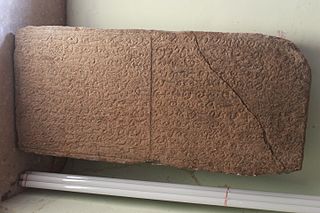
Jacob Pakalomattam was an Archdeacon of the Saint Thomas Christian community in India in the years preceding the Synod of Diamper in 1599. He was a native of Muttuchira and belonged to the Pakalomattam dynastic family. His activities were based in the Church of Ruha d'Qudisha in Muttuchira. He owed his staunch allegiance to the traditionalist Eliah Patriarchate of the Church of the East and Metropolitan Mar Shemon, who was sent to India by Patriarch Eliya VI Barmama. He protested against the Latinising attempts of the Portuguese Padroado and resisted the Chaldean Catholic attempts of reconciliation led by Joseph Sulaqa and Abraham of Angamaly. Throughout his archdeaconate, he is known to have rebelled against the Chaldean Catholic archdeacons including Givargis of Cross.















